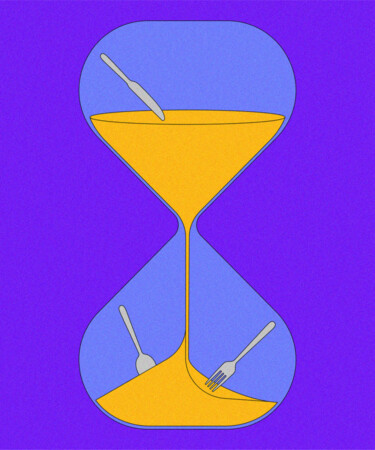We all have our grievances about restaurants. Whether it’s only seating full parties or subpar wine service, not every aspect of going out is going to please every guest. (Which is kind of unfortunate, because isn’t that the whole point of hospitality?) One such grievance is the restaurant table time limit, which might seem somewhat inhospitable, depending on how it’s enforced.
Most restaurants and bars have time limits. At LaLou, for example, we had an hour-and-a-half time limit for two-tops, an hour and 45 minutes for three-tops, two hours for four-tops, and two and a half hours for parties of six or more. This is all pretty standard and necessary to keep service running smoothly. And generally, most guests understand and respect time limits. But, as with most elements of hospitality, communication is key. If a party of four is reminded of when they need to leave every 15 minutes, that’s not only putting a lot of pressure on the guests, but creating a horrible dining or drinking experience for them, too. Maybe that doesn’t matter to a restaurant or bar that doesn’t really care about the guest experience, but for most operators it should.
So how do you navigate enforcing time limits without being too aggressive? And how do you avoid getting insulted by time limits as a guest?
Why Restaurants Have Time Limits
Before we start debating the merits of this service style, let’s get into the why. Time limits exist for a reason, and much like that “only-full-parties-will-be-seated” rule, it all comes down to curbing abuses. The biggest offender? The camper.
If you’ve worked in restaurants, you know exactly who I mean. Campers are the people who settle in, pitch a metaphorical tent, and linger forever. On a slow Tuesday? No problem, stay all night. But on a packed Friday or Saturday, when you have a full book, that’s when restaurants start sweating.
We need to turn those tables. We have reservations waiting. We want the next guests to have the same great experience your party just had. But the real nightmare scenario? A camping table that isn’t spending. They passed on desserts and haven’t ordered drinks for the last hour and a half. They’re just sitting there while another paying guest has reserved and is waiting for a table — and on a night when restaurants really need to make money.
That’s why time limits exist. But just as important as the rule itself is how it’s communicated.
Excessive reminders feel more like a countdown clock than hospitality. Instead, restaurants should deliver the message with empathy. A simple, polite heads-up at the start — “Just so you know, we have another reservation at X time” — is usually enough. Most guests will be understanding. Of course, there will always be a few who aren’t, but that’s just part of the business.
When possible, offering guests a spot at the bar to continue their evening is a great way to keep them happy (and keep the revenue flowing). The goal isn’t to rush people out, it’s to strike a balance between accommodating everyone and running a successful business.
The Secret Weapon: Reservation Notes
Another way restaurants handle campers? Behind-the-scenes intel. At LaLou, we made notes in our reservation system: “Camper,” “Loooong turn times,” “Loves big red wines,” “Martini lover.” These notes helped us strategize. If a known camper was on the books, we might adjust our seating plan to allow more time before the next reservation. Regulars got special consideration.
At the end of the day, long turn times happen. Restaurants do their best to accommodate campers while also keeping things moving. But as diners, it’s good to remember — especially on weekends — that these places rely on turnover to survive. A little awareness goes a long way in making the dining experience enjoyable for everyone.
